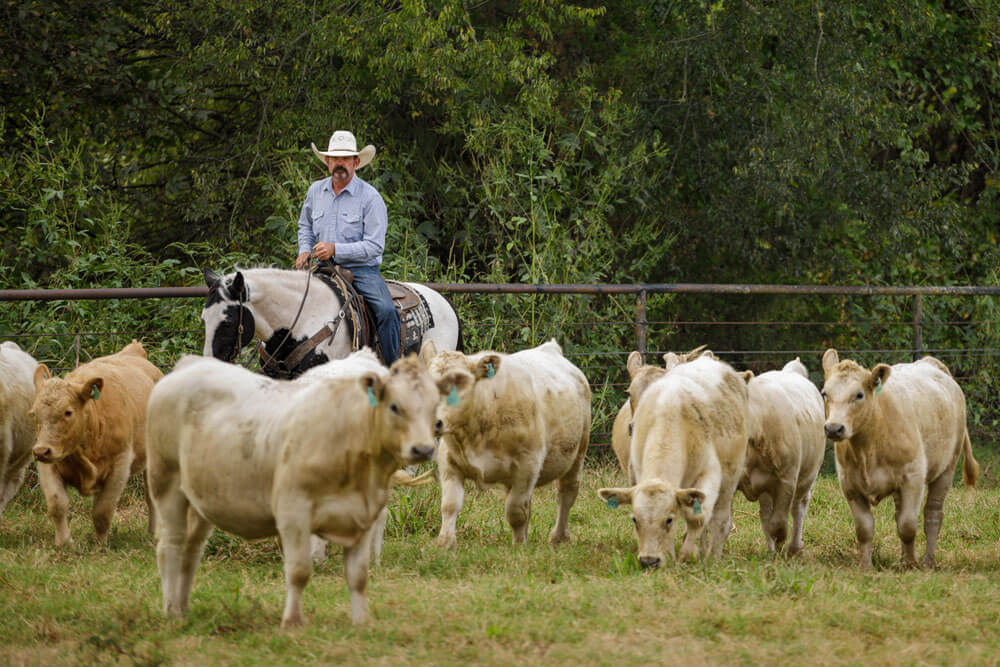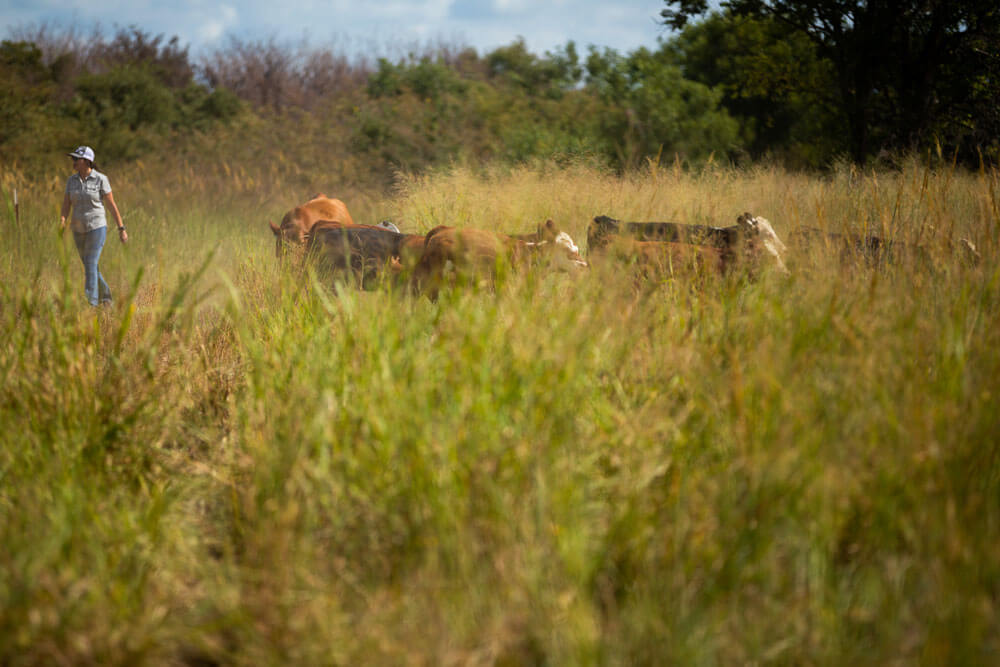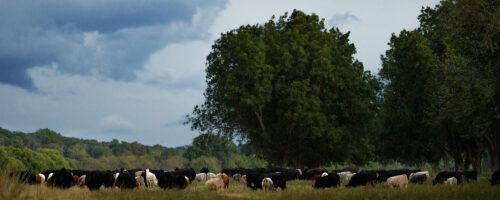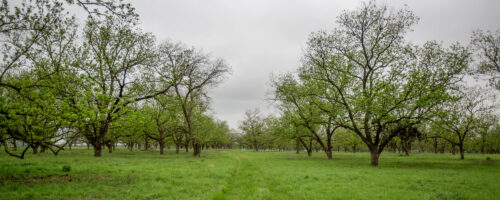Observations from the Noble Red River Ranch: Regenerative Ranching and Cattle Behavior
Noble staff share some observations about the difference in cattle behavior since our transition to regenerative management practices on Red River Ranch.
In March of 2021, Noble Research Institute began to manage our Red River Ranch using regenerative management practices. We’d like to share some of our observations we have made since we began our transition, especially the ones which have helped us see the difference in cattle behavior under regenerative management.
Some producers may believe their livestock will not work in a regenerative ranching scenario due to the fact they feel their animals are too flighty and wild, or that they will not tolerate being fenced into smaller paddocks. Here’s how it went for us as we started the transition from traditional to regenerative management.

Spending free-up time with cattle made a difference
While haying, fertilizing and using weed-control chemicals are still in a producer’s toolbox in a regenerative system, we opted not to use them on our Red River Ranch this year for numerous reasons. We had leftover hay from the previous year, so we opted instead to let the forage grow in order to graze it later as standing dry forage. We also decided to not apply fertilizer, as we had residual nitrogen in our soils and included legumes in our cover crops. After years of chemical application on the ranch, we wanted to evaluate the outcome, over time, of not using chemical weed control. So we did not use herbicides in 2021.
This freed up a considerable amount of time. While we used a small portion of this time to build temporary fence, we used more of the available time to monitor cattle performance and become more familiar with the animals. Walking through the animals further increased their docility and gave us an opportunity to monitor their body condition and fecal matter. These additional observations gave us insight into how the cattle are performing under our management.

Using fresh grass as “the draw”
We used temporary fences in certain areas during certain times of the year to increase our stock density. We have found that with the increased use of temporary fencing, our cattle have developed a smaller flight zone and are more tolerant of humans. Since we are among the cattle more frequently, and they see us walking and moving around them rather than just in a feed truck or UTV, they no longer act like they view us as a threat or predator.
In the past, when the cattle needed to be moved from one paddock to the next, we would “draw” them to us with feed out of the feed truck. Now that the cattle know there is fresh, nutritious grass in the next place we move them, we are effectively using the fresh grass as “the draw.” Once, we even moved cattle from a grazed paddock, through an ungrazed paddock, to the paddock we wanted them to graze. While the cattle did grab a bite of grass from the in-between paddock we moved them through, none stopped to the extent that someone had to push or drive them to their new grazing home.

Easier to sort off bulls, wean calves
Historically, when breeding season was over, we would either gather the whole herd, take them to the lots and sort the bulls off, or we would go out to the pasture, sort the bulls off individually and drive them to a pasture away from the cow herd. This year, by using our grazing plan, we were able to sort the bulls off the cows during a normal pasture move. The bulls wound up in a pasture next to the cows with only an electric fence separating them and no issues. We would never have considered doing that before, because our cattle were not used to being moved and handled as frequently as they are now.
After handling our cows and calves this year with multiple moves every week, we fence-line weaned the calves off the cows the second week of October. Two days after weaning, the cows were moved several pastures away, and the calves were moved to a fresh paddock. Most of the calves began grazing upon entering the new paddock, and vocalizations were less than expected. We believe the prior training of the calves set them up to be better equipped for the stresses of weaning.

All in all, in just the last eight months at our Red River Ranch, we have found that regenerative ranching principles improved animal behavior and increased the stockmanship of our animal caregivers.




Comment